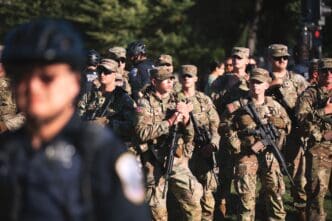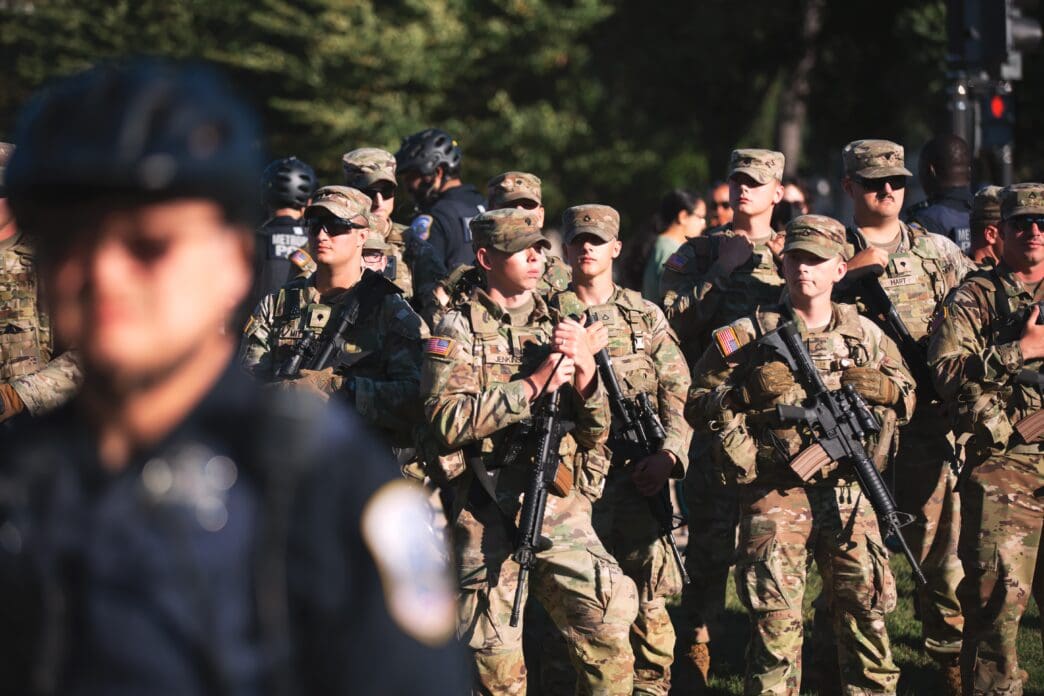Executive Summary
The Story So Far
Why This Matters
Who Thinks What?
President Donald Trump on Friday asked the Supreme Court to authorize the deployment of the National Guard in Chicago, bringing a significant legal dispute over a president’s authority to use military troops on American soil before the justices for the first time. The emergency appeal follows a series of lower federal court decisions that temporarily blocked the administration’s efforts, citing concerns that Trump had vastly overstated the need for such a deployment.
Legal Battle Over Presidential Authority
The filing initiates a critical showdown over presidential power, particularly as the administration is simultaneously attempting to deploy the National Guard to several other U.S. cities. The emergency appeal was submitted after the Chicago-based 7th U.S. Circuit Court of Appeals upheld an order that temporarily blocked the deployment.
In its appeal, the administration argued that the lower court order “improperly impinges on the president’s authority and needlessly endangers federal personnel and property.” The litigation places the controversy before a Supreme Court that has historically deferred to the president on matters of national security and the definition of a national emergency, though it has rarely ruled on such deployments.
The Trump administration is seeking a swift order that would permit the deployment to proceed while the high court considers the broader case. It contends that lower courts were impermissibly encroaching on the president’s authority to command federalized Guard members.
Arguments from the Administration
The administration asserted that the lower court order positioned the judicial branch “in the untenable position of controlling the military chain of command and judicially micromanaging the exercise of the president’s commander-in-chief powers, including the decision about which military forces the president can deploy.”
Solicitor General D. John Sauer described the situation in Chicago with strong language, telling the court that federal officials there “have been threatened and assaulted, attacked in a harrowing pre-planned ambush involving many assailants.” Sauer added that federal agents are “forced to desperately scramble to protect themselves and federal property, allocating resources away from their law-enforcement mission to conduct protective operations instead.”
Contrasting Perspectives and Precedents
This portrayal stands in contrast to U.S. District Court Judge April Perry’s description of the situation earlier this month. Judge Perry, a Biden nominee, highlighted what she called “a troubling trend of defendants’ declarants equating protests with riots and a lack of appreciation for the wide spectrum that exists between citizens who are observing, questioning, and criticizing their government, and those who are obstructing, assaulting, or doing violence.”
The Department of Justice’s case for deployment heavily relies on the 1827 Supreme Court decision in Martin v. Mott. In that case, the court ruled that “the authority to decide whether the exigency has arisen belongs exclusively to the president,” suggesting that federal courts may not review a president’s decisions to call up the Guard.
Conversely, the states challenging these deployments dismiss the notion that protests against federal agents are comparable to an invading foreign army. They cite the 1932 decision Sterling v. Constantin, where the Supreme Court ruled that courts could review deployment decisions that extended beyond a “range of honest judgment.”
Next Steps for the High Court
The Supreme Court has requested a response from state and local officials by Monday evening, indicating a faster-than-usual turnaround for the case. The 6-3 conservative court has predominantly sided with President Trump in the majority of emergency cases he has brought before it since returning to power in January.








